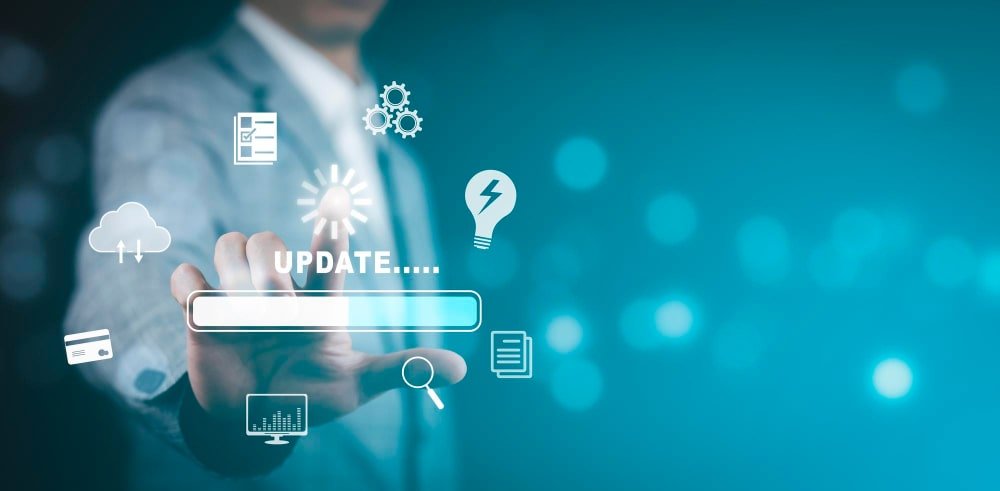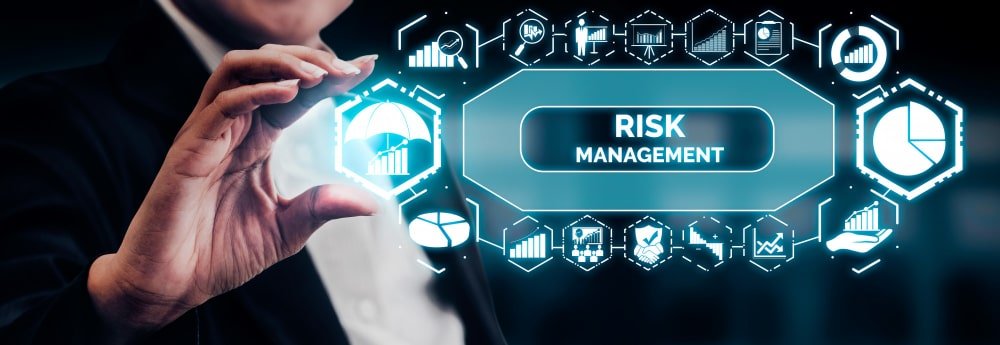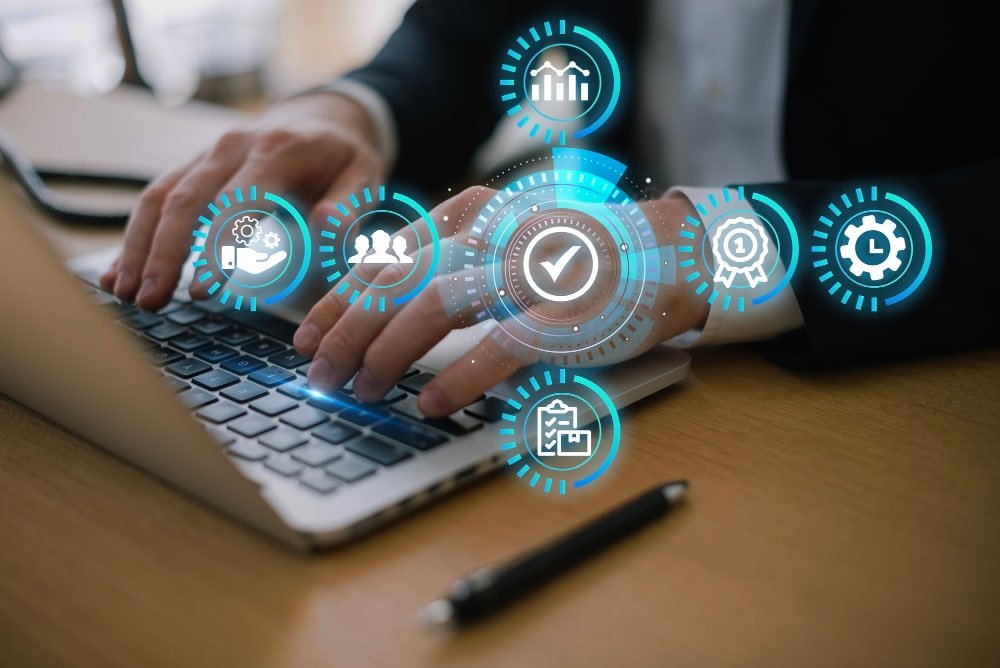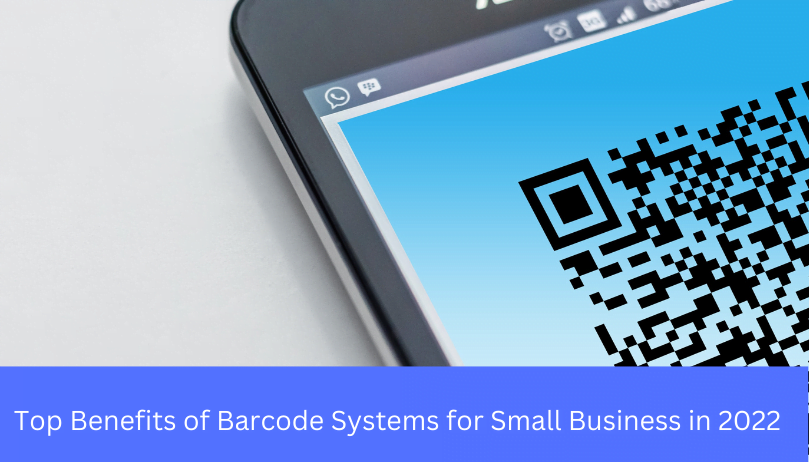In this technology-driven landscape, the efficient management of IT assets has become pivotal for organizational success. Enter IT Asset Management ITAM, a strategic practice that navigates the complexities of overseeing and optimizing a wide spectrum of IT resources. In this blog, let’s understand the core facets of ITAM, from its definition and benefits to its essential stages and key factors. We’ll unravel the role of ITAM software asset management (SAM) tools and explore how they enhance operational efficiency.
Related blog: The Best IT Asset Management Software in 2023
What is IT Asset Management ITAM?

The practice of IT Asset Management (ITAM) empowers organizations to meticulously oversee their array of IT assets. These assets encompass a diverse spectrum, ranging from tangible hardware components to intangible software licenses and digital repositories. The primary objective of ITAM is to optimize the utilization of these assets while concurrently maintaining accurate and comprehensive records of their status, location, and progression throughout their lifecycle.
Within the contemporary business landscape, where technological infrastructure plays a pivotal role, the management of IT assets has transitioned from a secondary concern to a strategic imperative. ITAM serves as a pivotal practice that provides organizations with the tools to precisely orchestrate their technological resources. These resources collectively constitute the intricate machinery that drives seamless business operations.
More than a static record-keeping endeavor, ITAM embodies a dynamic process that necessitates ongoing vigilance and adaptability. It operates with a dual purpose: firstly, to ensure that each asset is optimally leveraged to fulfill its intended purpose, and secondly, to maintain an accurate and comprehensive record of its journey within the organizational ecosystem. By achieving these dual objectives, businesses gain a heightened understanding of their technological landscape. This understanding, in turn, equips them to make well-informed decisions, allocate resources effectively, and respond adeptly to evolving operational requirements.
However, the scope of ITAM extends beyond resource optimization. It also plays a pivotal role in proactively identifying and mitigating potential risks. In an era where cyber threats loom large and regulatory frameworks grow increasingly stringent, ITAM stands as a crucial line of defense. By systematically evaluating assets for vulnerabilities, ensuring software compliance, and adhering to industry standards, organizations can bolster their cybersecurity measures and protect themselves from potential legal and financial repercussions.
Benefits of IT Asset Management
Cost Efficiency: Optimizing Resource Allocation
IT Asset Management (ITAM) empowers organizations to strategically allocate resources by analyzing IT asset utilization patterns. This informed decision-making process ensures that budgetary allocations are directed towards areas that require attention while unnecessary expenses are minimized.
For example, a retail company employs ITAM to assess the usage data of its point-of-sale systems. By identifying outlets with higher transaction volumes, the company allocates more resources to these locations, enhancing customer service without overspending.
Regulatory Compliance: Safeguarding Legal and Financial Integrity
ITAM serves as a guardian of legal and financial adherence by meticulously tracking software licenses and ensuring compliance with industry standards. This proactive approach helps organizations avoid penalties and reputational damage. Consider a healthcare institution utilizing ITAM to monitor software licenses. During an audit, the institution provides accurate documentation of software usage, demonstrating compliance and mitigating potential legal liabilities.
Enhanced Security: Strengthening Cybersecurity Measures
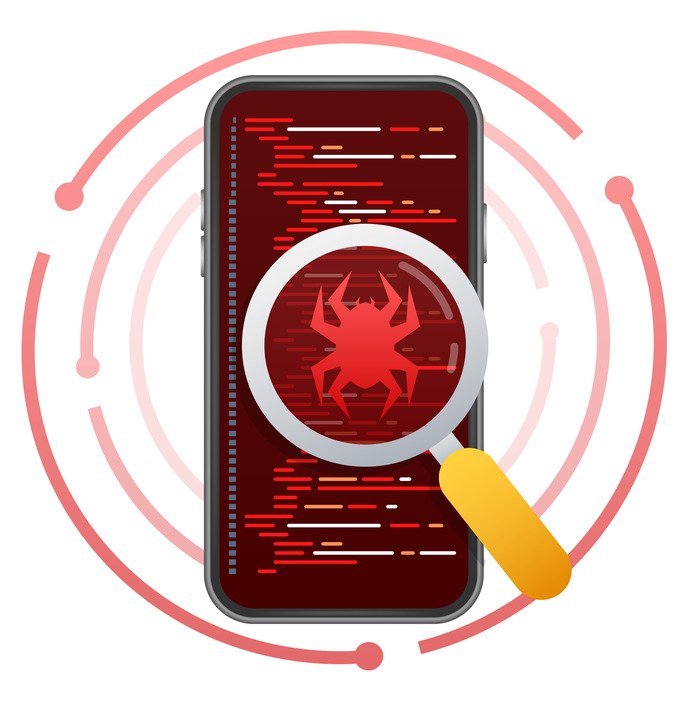
ITAM plays a pivotal role in bolstering cybersecurity by identifying vulnerabilities in hardware and software assets. Addressing these vulnerabilities helps organizations enhance their security measures and minimize potential risks. For instance, a financial services company conducts routine ITAM assessments and discovers a security vulnerability in a critical software application. Swift action is taken to patch the vulnerability, preventing potential data breaches.
Resource Optimization: Strategic Management of Assets
ITAM empowers organizations to strategically manage their resources by analyzing asset lifecycles and usage trends. This approach ensures that resources are utilized optimally and retired at the appropriate time. For instance, an educational institution utilizes ITAM to monitor hardware performance in its computer labs. Analyzing data over time helps identify underutilized devices, allowing for resource reallocation to areas with higher demand.
Improved Service Delivery: Elevating User Satisfaction
ITAM significantly impacts service delivery by enabling swift diagnosis and resolution of hardware or software issues. This translates to improved service quality, increased productivity, and enhanced user satisfaction. Imagine a technology company employing ITAM to monitor its internal IT infrastructure. When an employee reports a software malfunction, the IT team leverages ITAM data to promptly identify and resolve the issue, ensuring seamless workflow and a positive user experience.
Stages of IT Asset Management
Strategic Planning
The strategic planning phase in IT Asset Management (ITAM) is akin to charting a course on a navigational map. This initial step involves formulating clear objectives, delineating policies, and assigning responsibilities. By establishing a comprehensive framework, organizations set the stage for effective asset management practices. For example, a multinational corporation embarks on a strategic planning phase for ITAM. They define objectives such as cost reduction and regulatory compliance, outline policies for software usage, and designate specific teams responsible for different aspects of asset management.
Acquisition and Procurement
During the acquisition and procurement phase, organizations become adept at navigating the procurement landscape, ensuring the acquisition of IT assets is a well-orchestrated symphony. This entails sourcing assets, negotiating with suppliers, and meticulously documenting every detail. Consider a manufacturing company investing in new production machinery. By documenting the specifications, costs, suppliers, and procurement dates of these assets, the organization creates a comprehensive repository of information for future reference and management.
Deployment and Configuration
The deployment and configuration phase resembles seamlessly integrating individual pieces into a larger puzzle. IT assets are integrated into the organization’s technology ecosystem, ensuring they function cohesively within the existing framework. For instance, a software company introduces new project management software across various departments. During deployment, the software is carefully integrated into the existing IT infrastructure, ensuring compatibility and optimal performance to streamline project management processes.
Usage and Monitoring

In the usage and monitoring phase, the spotlight turns to continual vigilance and attentive observation. Organizations closely monitor the performance, utilization, and overall health of their IT assets to detect potential issues before they escalate. Imagine a telecommunications company managing a network of servers. Through constant monitoring, the company identifies a server showing signs of increased latency. By swiftly addressing this performance issue, they prevent potential disruptions in customer services.
Maintenance and Support
The maintenance and support phase is akin to nurturing a garden, tending to assets to ensure their longevity and optimal functionality. Routine maintenance activities, such as applying updates/patches and conducting hardware maintenance, are performed. For instance, a healthcare institution maintains its electronic health records system by regularly updating software and hardware components. This proactive approach ensures that the system remains reliable, minimizing downtime and enhancing patient care.
Disposal and Retirement
As assets gracefully approach the end of their lifecycle, the disposal and retirement phase ensures a responsible farewell. Organizations implement proper practices for retiring assets, considering data security and environmental impact. An example is a financial institution retiring outdated computers. Data is securely wiped to prevent data breaches, and hardware components are recycled or disposed of in an environmentally friendly manner, aligning with the organization’s commitment to sustainability.
Factors of Effective IT Asset Management
Accurate Data Management
Accurate data management is the bedrock upon which effective IT Asset Management (ITAM) stands. The meticulous upkeep of up-to-date records detailing asset specifications, warranties, and usage history is fundamental to seamless ITAM practices. Consider a technology company managing a diverse range of hardware assets. By maintaining accurate records of each asset’s specifications, installation dates, and maintenance history, the organization ensures that timely upgrades and replacements are executed, minimizing disruptions to operational continuity.
Automation

In the landscape of ITAM, automation, and tools emerge as formidable allies, streamlining data collection, tracking, and reporting processes. ITAM software and tools act as digital collaborators, enhancing accuracy and operational efficiency. For instance, an e-commerce platform employs specialized ITAM software to track software licenses. By automating the process of license tracking, the platform ensures that compliance is maintained without straining human resources.
Collaboration Across Departments
Effective IT Asset Management thrives on collaboration that transcends departmental boundaries. Collaborative efforts between IT, procurement, finance, and other relevant departments form a cohesive tapestry of asset management. Imagine a manufacturing company aiming to optimize its software usage. By fostering collaboration between IT and procurement, the company aligns software procurement decisions with actual business needs, preventing unnecessary expenditures and ensuring resource optimization.
Regulatory Compliance and Audits
In the intricate landscape of regulatory compliance, ITAM serves as a reliable compass, ensuring organizations navigate with precision. Regular compliance audits act as spotlights, illuminating potential discrepancies and ensuring adherence to software licensing agreements and regulatory standards. For example, a financial institution undergoes a compliance audit, verifying the accuracy of software licenses and usage. By pinpointing any disparities, the institution ensures that its software assets are aligned with licensing agreements and industry regulations.
Effective Change Management
Effective change management is akin to a well-charted course during transformations within IT Asset Management. Transparent communication and structured change management processes ensure that modifications, upgrades, or retirements of assets are well-documented and seamlessly communicated. Consider a telecommunications company undergoing a system upgrade. By adhering to effective change management practices, the company ensures that asset modifications are communicated to relevant stakeholders, minimizing disruptions and ensuring a smooth transition.
The Role of ITAM Software Asset Management (SAM)
The significance of specialized ITAM software, commonly known as Software Asset Management (SAM) tools, is undeniable. These tools serve as the key factors in efficient IT asset management, offering a comprehensive suite of streamlined functionalities designed to enhance operational efficiency and maximize resource utilization. SAM tools provide a multifaceted approach to asset management, encompassing automated data collection, license management, compliance tracking, and robust reporting capabilities.
Benefits of SAM Tools:
Automated data collection: SAM tools automate the data collection process, seamlessly gathering essential information about software assets, usage patterns, and licensing details. This eliminates the need for manual data entry, reducing human error and ensuring data accuracy.
License management: SAM tools provide organizations with a centralized platform to manage software licenses effectively. They offer real-time insights into license utilization, expiration dates, and renewal requirements, enabling proactive license management and minimizing the risk of non-compliance.

Compliance tracking: Ensuring compliance with software licensing agreements and industry regulations is a complex endeavor. SAM tools simplify this process by monitoring license usage and alerting organizations to potential compliance risks. This proactive approach helps organizations avoid costly penalties and legal repercussions.
Comprehensive reporting: SAM tools offer robust reporting capabilities, allowing organizations to generate detailed reports on software assets, usage trends, and compliance status. These reports provide valuable insights for informed decision-making, enabling organizations to optimize their software portfolio and allocate resources effectively.
Cost-effectiveness: One of the primary advantages of SAM tools is their ability to optimize software licenses, ensuring that organizations only pay for the licenses they actually need. By identifying underutilized licenses and reallocating resources, SAM tools contribute to significant cost savings.
Informed procurement and deployment: SAM tools provide insights into software usage patterns, enabling organizations to make informed decisions about software procurement and deployment. This data-driven approach ensures that software resources are allocated strategically, aligning with actual business needs.
In essence, SAM tools are the cornerstone of efficient IT Asset Management, enabling organizations to navigate the intricate terrain of software assets with precision and confidence. By harnessing the power of automation, compliance tracking, and comprehensive reporting, SAM tools empower organizations to optimize their software ecosystem, achieve regulatory adherence, and maximize the value of their IT investments.
Conclusion
As organizations navigate the complex terrain of the digital age, IT Asset Management (ITAM) emerges as a guiding compass, steering them toward streamlined operations, regulatory compliance, and strategic resource management. By meticulously orchestrating the lifecycle of IT assets, organizations can reap the rewards of cost savings, heightened security, and improved service delivery. Armed with meticulous planning, diligent execution, and the integration of advanced ITAM software, organizations are well-equipped to navigate the ever-evolving landscape of digital innovation. This journey culminates in sustained growth, fortified cybersecurity, and technological excellence, securing their position as trailblazers in the digital revolution.









